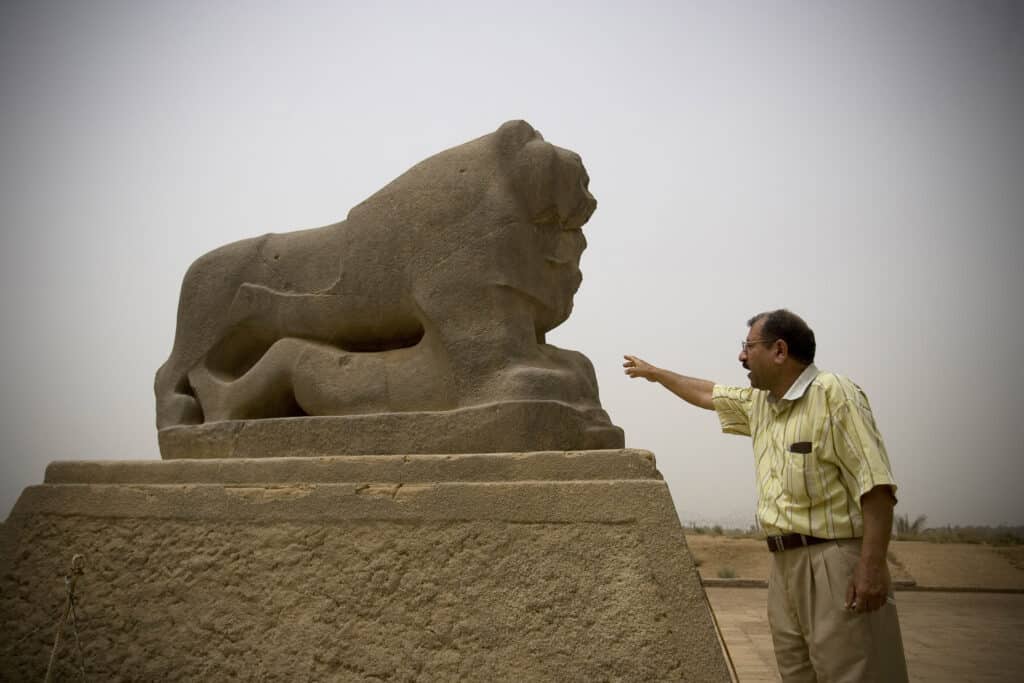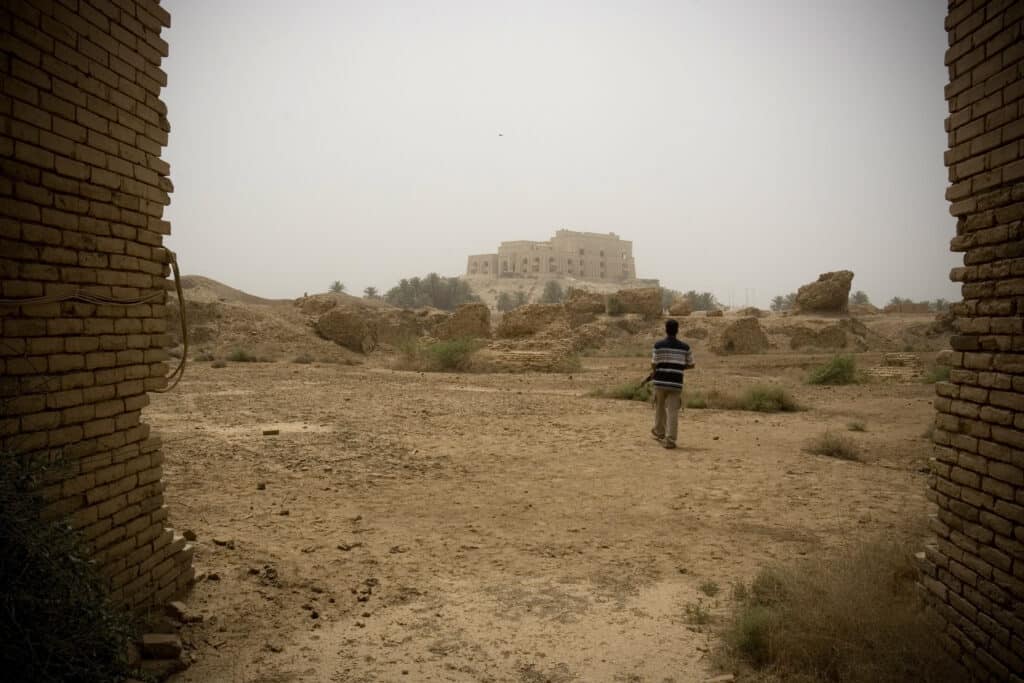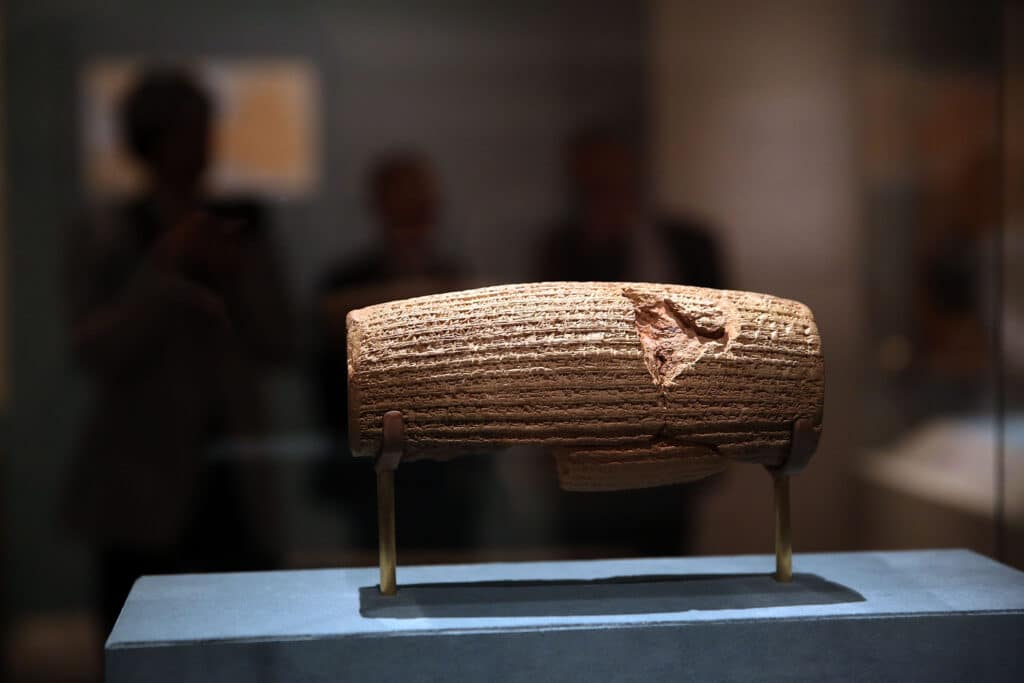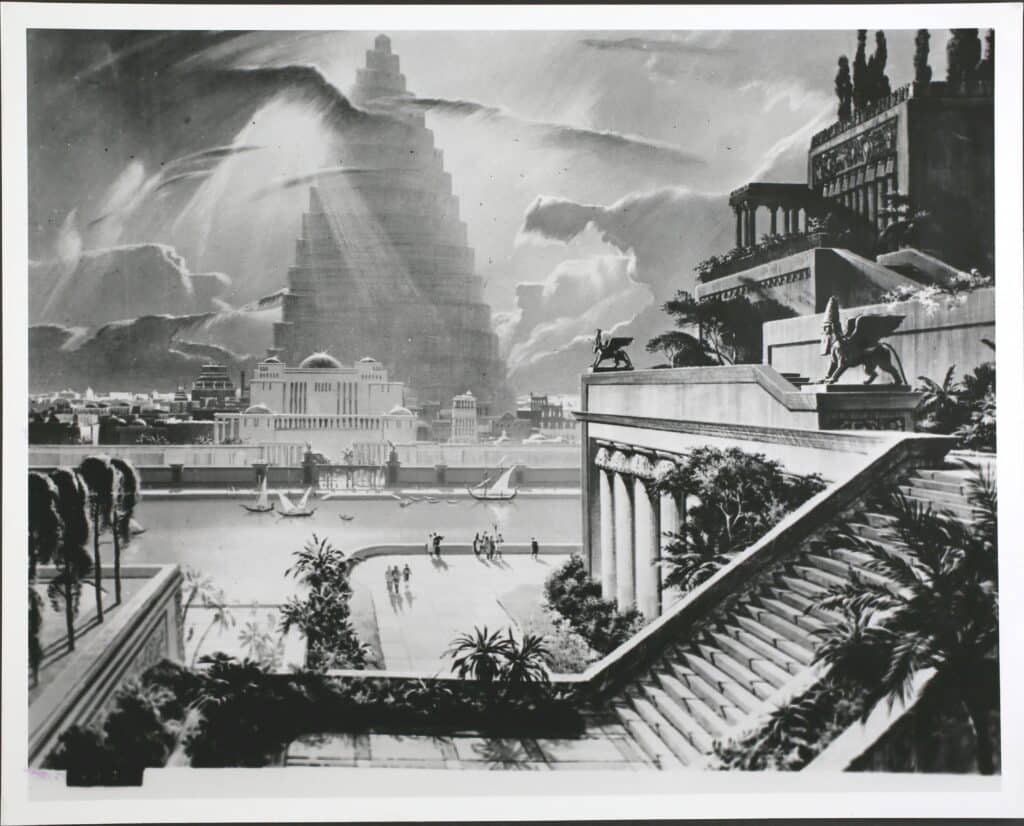In approximately 225 B.C., the Greek engineer Philo compiled a list of seven temata—known today as the Seven Wonders of the Ancient World. These include the Pyramids at Giza, the Statue of Zeus at Olympia, the Temple of Artemis at Ephesus, the Mausoleum at Halicarnassus, the Colossus of Rhodes, the Pharos of Alexandria, and the enigmatic Hanging Gardens of Babylon, attributed to Babylon’s powerful King Nebuchadnezzar II (reigned 605-561 B.C.). but where were these gardens located?

Oh, Garden, Where Art Thou?
The Hanging Gardens of Babylon, traditionally attributed to Babylon’s formidable King Nebuchadnezzar II (reigned 605-561 B.C.), remain a profound mystery within the list. Despite extensive searches, no evidence of these gardens has been unearthed in ruins or mentioned in Babylonian records. The pursuit of these gardens stands as one of the most intriguing challenges in Mesopotamian scholarship, with archaeologists continuing to grapple with their possible location in Babylon and the reasons behind their purported uniqueness. Debates persist regarding the interpretation of the term “hanging,” their potential appearance, irrigation methods, and even their existence.

Except for Babylon, all the landmarks listed by Philo are situated in or near the eastern Mediterranean, well within the sphere of Hellenistic influence. The Hanging Gardens, however, stand as an eastern anomaly, described as “a long journey to the land of the Persians on the far side of the Euphrates.”
At the time of Philo’s writing, Babylon and the Persians had already been conquered a century prior by Alexander the Great, who passed away in Babylon in 323 B.C. Despite the spread of Greek culture into Central Asia through Alexander’s conquests, Babylon and its renowned monuments remained distant and exotic to Philo’s audience.
.
Making History
Philo describes the innovative Hanging Gardens as constructed on a massive platform of palm beams elevated by stone columns. This framework of palm beams supported a dense layer of soil, which was then adorned with various trees and flowers—a marvel of cultivation suspended above onlookers’ heads.

Beyond their suspended design, the gardens’ wonder lay, as per Philo, in their diversity: “All manner of flowers, the most delightful, agreeable, and pleasing to the eye, are found there.” Additionally, their irrigation system was a source of awe: “Water, gathered from above in numerous spacious containers, reaches every corner of the garden.”
Take it From Someone Who Knows
Diodorus, a Greek historian hailing from Sicily, provided one of the most intricate depictions of the gardens within his extensive work, Bibliotheca historica, a monumental 40-volume history of the world. Much like Philo, he meticulously described an intricate support system of “beams”: layers of reeds saturated in copious amounts of bitumen, topped with two courses of baked brick secured by cement, and further covered with a layer of lead to prevent moisture seepage from the soil.

According to Diodorus, these layered structures ascended in tiers and were densely adorned with trees of various kinds, chosen for their impressive size or aesthetic appeal, while irrigation was facilitated by machinery that drew abundant water from the nearby river.
It Goes Way Back
Diodorus and Strabo, for instance, referenced Babylonian descriptions from fourth-century B.C. writers like Callisthenes, Alexander’s court historian and great-nephew of the philosopher Aristotle. It’s believed that the segment in Diodorus’s Bibliotheca historica describing the Hanging Gardens originates from the writings of Cleitarchus, a biographer of Alexander the Great from the late fourth century B.C.

Courtesy: SGK Planet
Another significant source shedding light on the gardens was penned by a Babylonian priest named Berossus, who lived during the early third century B.C., shortly after Cleitarchus’s time and several decades before Philo. Based on accounts of his lost writings, Berossus appears to have provided intricate details about the gardens that served as inspiration for artists for centuries to come.
Real or Fake?
historians encounter a dilemma: All references to a Babylonian garden known for its suspended or tiered structure originate no earlier than the fourth century B.C. Notably, Herodotus, the Greek historian writing in the fifth century B.C., just a century after Nebuchadnezzar’s era, omits any mention of these remarkable gardens in his Histories’ depiction of Babylon.

oday, most scholars concur that the structure was likely a warehouse. Excavations revealed several storage jars, while the discovery of a cuneiform tablet dating back to Nebuchadnezzar II’s era provided compelling evidence. The tablet detailed the distribution of various commodities, including sesame oil, grain, dates, spices, and high-ranking captives. Koldewey’s excavation also unearthed the foundations of Babylon’s ziggurat, a stepped tower, adding to its significance.
British archaeologist Leonard Woolley, while excavating Ur, observed regularly spaced holes in the ziggurat’s brickwork. He speculated that these could have been part of a drainage or irrigation system, possibly used for gardens ascending the ziggurat’s face. This theory suggests a potential connection between such systems and the design of the Hanging Gardens in Babylon.







